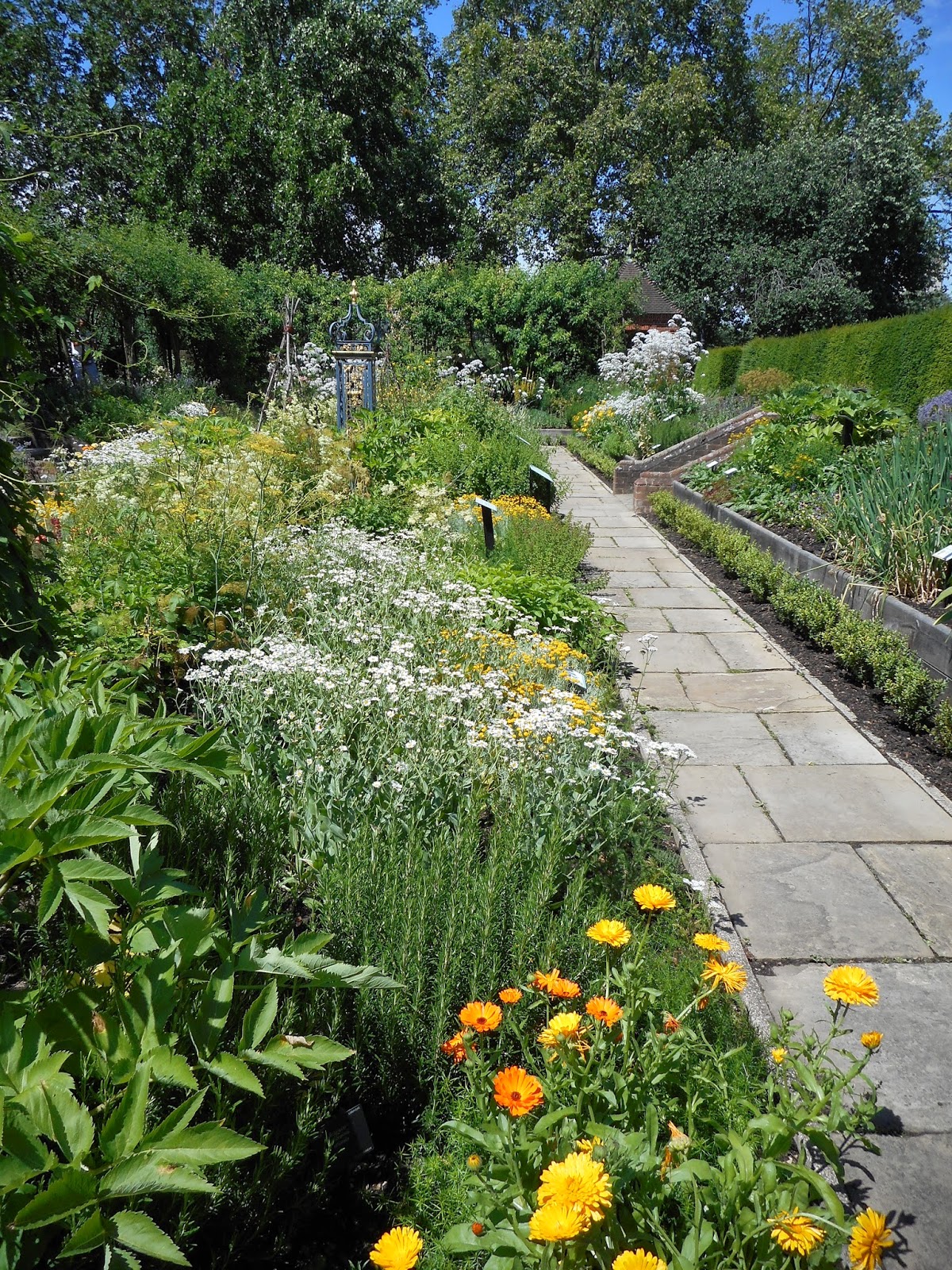"He who persuades a man to garden [will have]
transformed a drone into a bee, and . . . done more to keep his brother from
drunkenness than all the pamphlets that were ever printed . . . He will have
added not only to our respectability but to our food supply."
Samuel Reynolds Hole (1819-1904), Dean of Rochester, quoted
in The Cottage Garden (2011) by Twigs
Way.
Some English Victorians apparently expected the cottage
garden to feed the body, promote character, preserve the soul, and keep one
away from the local pub. I like to imagine our little house in Chicago as a bit
like a cottage, and the small garden plots I've created around the house have a
nice cottage-like blend of the practical and the decorative.
Gardening has not, however, done much to promote a spirit of
temperance. Whenever I call it a day in the garden, I stand around sipping wine
— fussing, scheming, and admiring. And a primary purpose of the back garden is to
create a good outdoor dining space.
I started gardening, at least in part, because keeping a
descent looking lawn seemed hopeless — and somewhat pointless considering how
small our lot is. But after more than ten years of puttering, I suppose I have
become slightly obsessed with the whole thing.
That's not so say I'm a master gardener. My gardening habits
are a constant tension between getting it just so and not making my family
crazy. I'm unwisely optimistic when the garden catalogs appear in January, and
I usually concede defeat in mid-August when it's too damned hot to deal with
weeds.
Therefore, if I'm going to share my gardening adventures
with a wider audience, I should probably establish some expectations, so that
readers are not too disappointed when they discover the paucity of
horticultural wisdom to be gleaned here.
This is probably what one needs to know:
·
My husband, Greg, and I bought our house almost
11 years ago. We have an 8-year-old son named Clark.
·
My real job is stay-at-home dad and part-time
freelance writer (mostly medical writing).
·
The entire property — not the garden — is 25
feet by 100 feet.
·
I'm not a super urban-gardener who provides a
substantive amount of my family's food supply, but I have a few friends who are
such gardeners.
·
I have canned exactly once in my adult life
(rhubarb chutney).
·
I have three rain barrels and a small rain
garden for overflow, but until we manage to put in some pebble walks, the
entire back garden will continue to serve as overflow during downpours.
·
I have a plastic compost bin that looks a bit
like an oversized kimchi pot.
·
I don't use chemical fertilizers, but I can't
claim to be strictly organic, because not all the produce I buy is organic. That
would mean, of course, the compost bin has nonorganic vegetable peels and
whatnot.
·
I really do like gardening — and wine.
Here are photos of the gardens in their current state.
The front garden
The right side is in the shade almost all day. The left side gets hot afternoon sun. The parkway suffers a great deal of abuse.
The side garden
This tiny plot of land actually belongs to the neighbor, but
the neighbor has no compelling reason to deal with this. The entrance to our
house faces this shady area, and the neighbors let me do as I please with the
space.
The back garden
This is the back garden as seen from the dormer window in
Clark's bedroom. The peonies and irises were lined up along the fence when we
moved in and the rest was a lawn, by which I mean creeping Charlie. We planted
the crab apple tree and the rest. The two boxes on the right toward the back
are Clark's. The mulched area may be a pebbled patio someday — after Clark is
out of college. (The Cavalier King Charles Spaniel is Nala.)
The bottom of the
garden (where the fairies live)
This is home to an amethyst beautyberry shrub and enough
rhubarb for me to be dubbed a "rhubarb supplier" by my friend, Marie.
It's also where I grow asparagus, two or three tomato plants, and sugar pumpkins,
which grow up the trellis. Clark's collection of crabapple limbs and branches
is on the right. Last year we made a rough lean-to.
So this is gardening with wine. And I should probably
mention I'm also not a wine connoisseur.


















